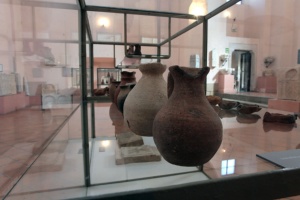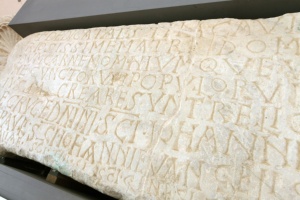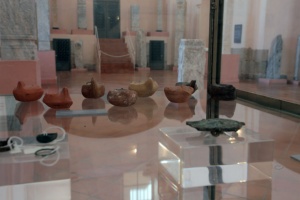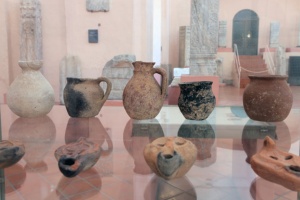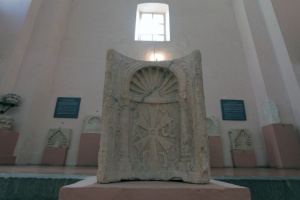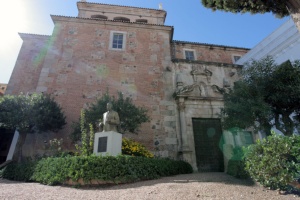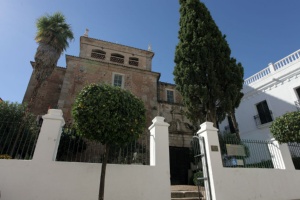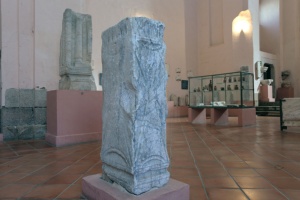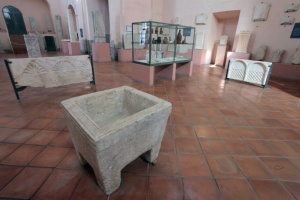Art and culture
Museum of Visigoth Art and Culture
The collection of Visigoth pieces in this museum brings together relics from Mérida from the 4th-8th centuries, as the capital of the Diocesis Hispaniarum and as the metropolitan capital of the province of Lusitania
- Explore
- Museo del Arte y la Cultura Visigoda
Display of the splendour of the Visigoths in Mérida
Location and Contact:
- Tel.:+34 924 30 01 06
- Opening times
Tuesday-Saturday:
1 October to 31 March:
9.30am-6.30pm.1 April to 30 September:
9.30am-8pm.
Sundays and public holidays:
10am-3pm.
- Fee
Normal admission: €3
Reduced admission: €1.50
Free admission: Saturday afternoons, Sunday mornings and the following days: 18 April (World Heritage Day), 18 May (International Museum Day), 12 October (Columbus Day), 6 December (Spanish Constitution Day).With your ticket, you can also access the National Roman Art Museum.
-
The collection of Visigoth pieces in this museum brings together relics from Mérida from the 4th-8th centuries, as the capital of the Diocesis Hispaniarum and as the metropolitan capital of the province of Lusitania
The Museum of Visigoth Art and Culture awaits you at the Santa Clara Convent church, a Baroque building built in the first half of the 17th century, which houses the most important pieces of Visigoth sculpture in the country.
The collection of pieces in Mérida was put together little by little thanks to private donations and the interest of some intellectuals in the subject. It contains:
-
Decorated pieces belonging to the architectural structure of temples, such as capitals, lintels, friezes...
-
Furniture or liturgical items, such as altar pilasters, altar feet and tables with a drawer for keeping relics in, etc.
-
Niches and vaults form part of the third group of remains.
-
A set of partition panels.
-
Different kinds of items: a baptismal font, a fragment of decorated piping, etc
The pieces on display in this Museum of Visigoth Art and Culture were found in different parts of Mérida and its surrounding areas. There are even remains found in excavations in the area of Mérida Alcazaba citadel, in the town of San Pedro de Mérida, in "Casa Herrera" or in Cubillana.
-
-
- Origin:
-
- 16th century
- Construction:
-
- Convent
- Art period:
-
- Visigoth
- Name:
-
- National museum
Accessibility:
- Disabled access
- Assistance for people with reduced mobility
- Access ramps
Theme:
- Art and culture
Gallery:
More suggestions
-
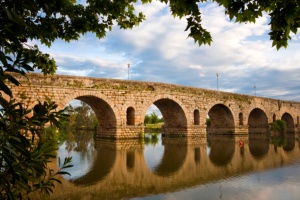
Roman bridge on the Guadiana River
In the city of Mérida, on one of the most shallow sections of the Guadiana River, we find a bridge built in the 1st century, at the same time as the foundation of Emerita Augusta. Thanks to its large size and features it is one of the most important Roman bridges in the Peninsula.
-
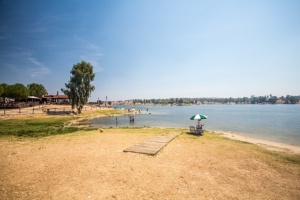
Proserpina reservoir
Proserpina reservoir, within easy reach of Mérida, dates back to Roman times and forms part of the region's archaeological ensemble, which has received the UNESCO World Heritage designation.
-

Roman amphitheatre of Mérida
The setting for fights between gladiators and wild beasts in Roman times, a large part of the structure of this amphitheatre is preserved intact today.
-
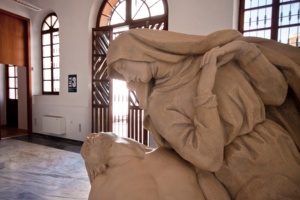
Museum of Mérida
The Museum of the Town of Mérida houses a collection on the Mérida-born sculptor and other pieces that take one on a route through the town's history.
-
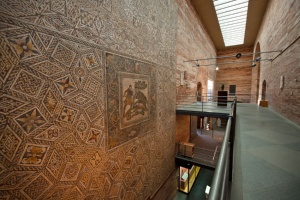
National Roman Art Museum in Mérida
The National Roman Art Museum (MNAR) shows the visitor different sides of daily life in the province of Hispania.
-
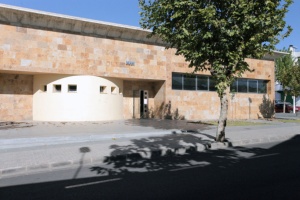
Extremadura Geology Museum
Its collection has made this museum one of the most important of its kind.
-
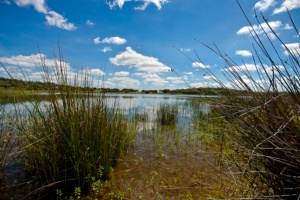
Charca La Vega Del Machal Special Protection Area (SPA) for Birds
Reservoirs are the main feature of this natural space.
-

Montijo Reservoir SPA
This reservoir, which has the reverse cycle to other Mediterranean reservoirs, is a meeting point for birds throughout the year.
-
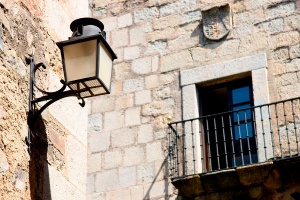
Trujillanos
-

Valverde de Mérida
-

Villagonzalo
-

Calamonte
-

Don Álvaro

